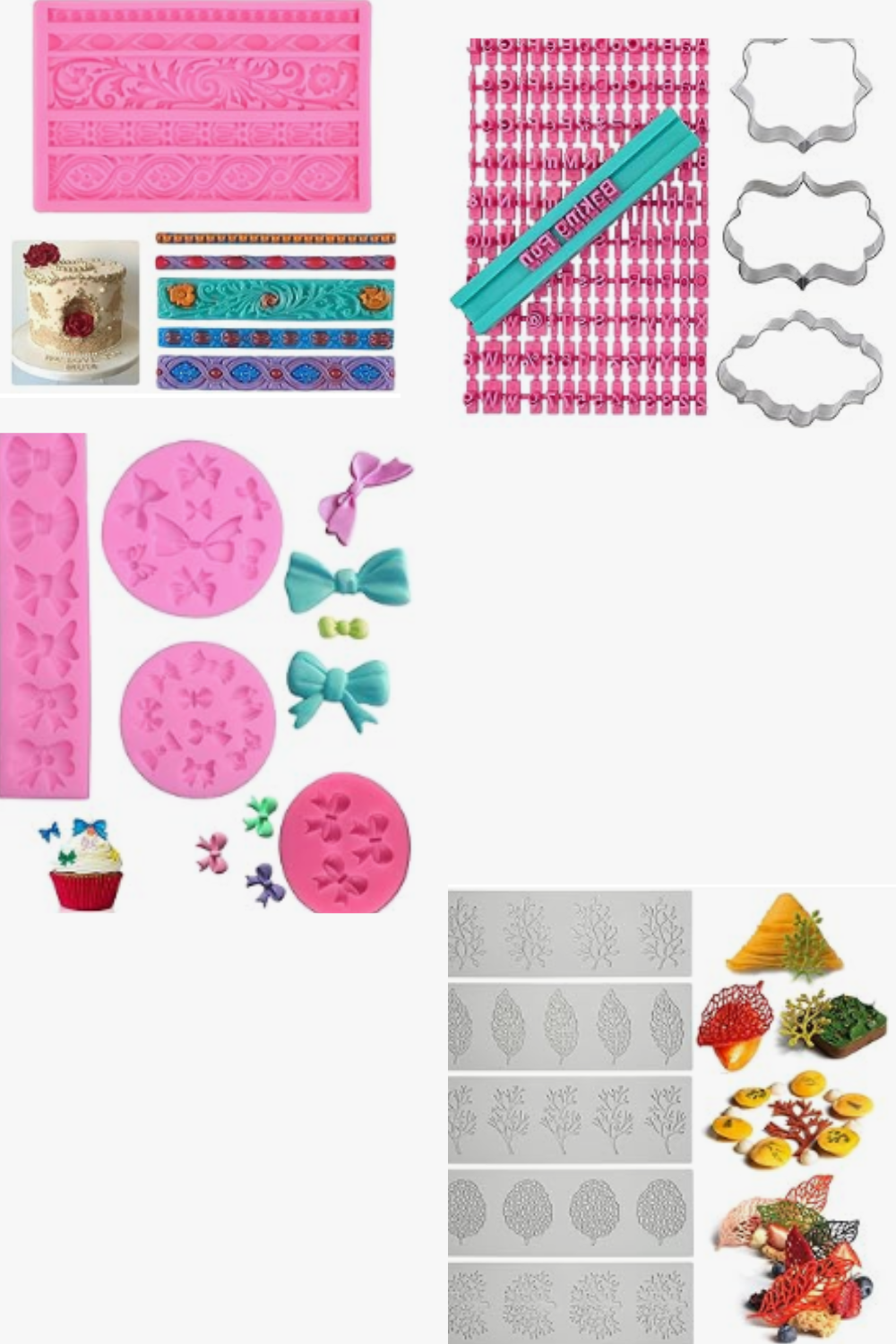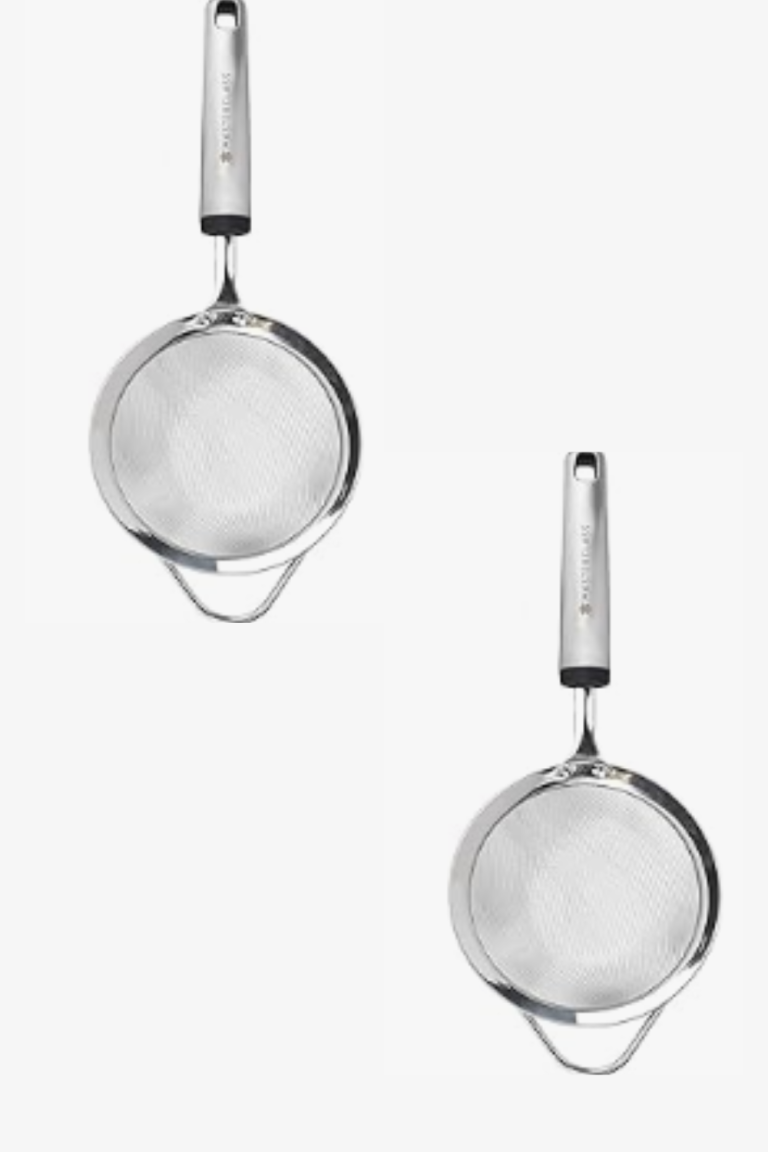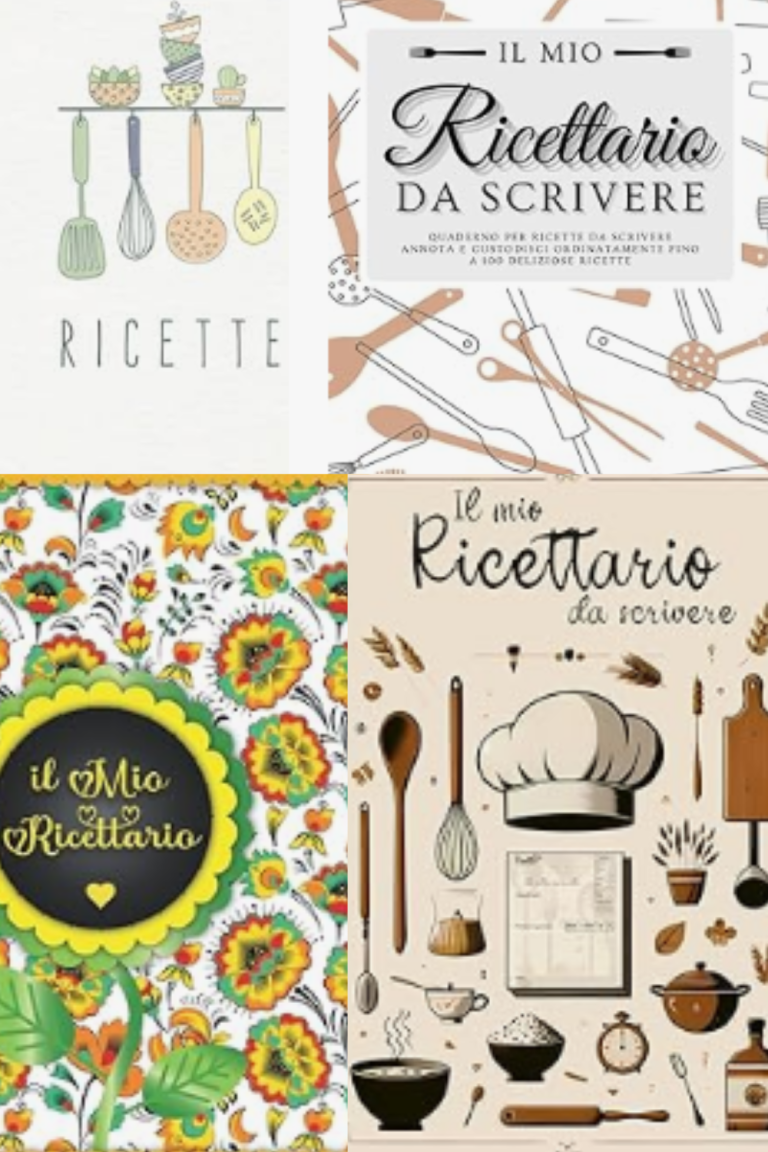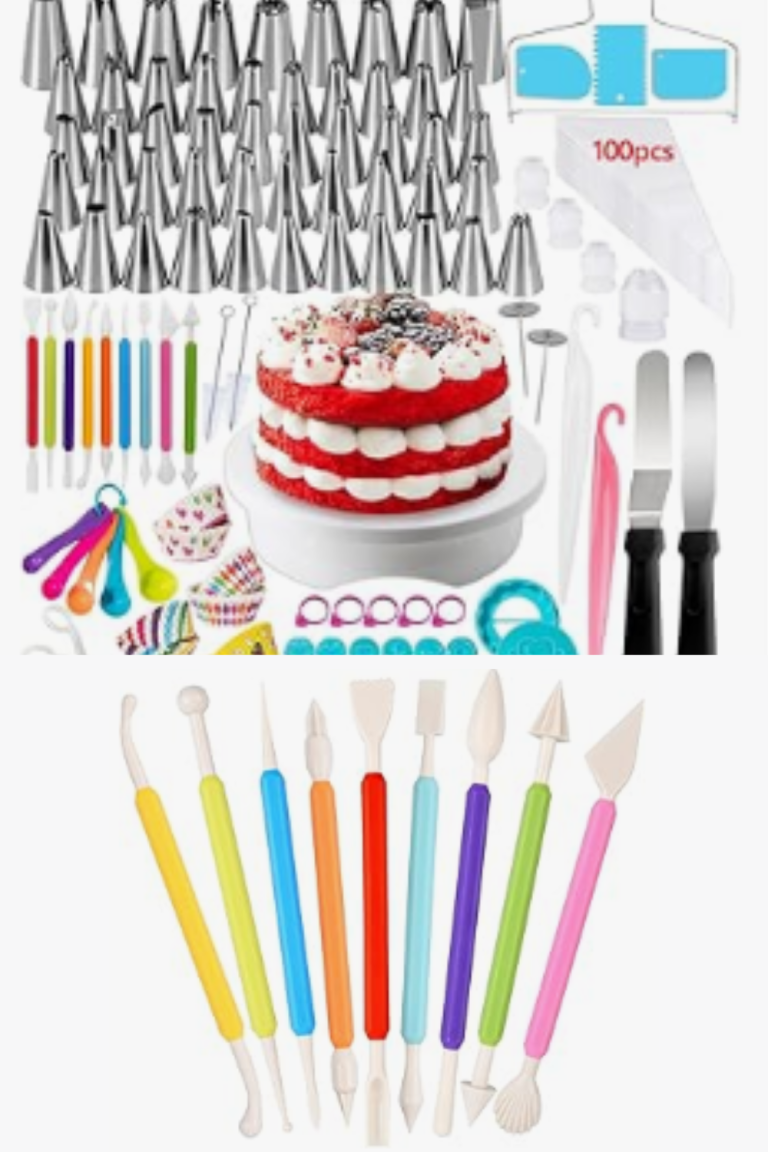FM: Fondant Mold role in cake making Explained
In this topic, I’m going to talk about the role of Fondant Molds (FM) in cake making, based on my own personal experience.
Table of Contents
ToggleWhat is Fondant Molds in cake making
Fondant molds, often abbreviated as FMs, are essential tools in cake decoration. These molds serve a crucial role in crafting intricate designs and shapes that elevate the visual appeal of cakes. Whether you’re a seasoned baker or a passionate hobbyist, incorporating fondant molds into your cake-making process can unlock a world of creative possibilities.
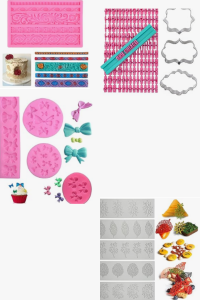
Fondant molds are designed to facilitate the shaping and detailing of fondant, a pliable sugar paste commonly used in cake decoration. These molds come in a variety of shapes, sizes, and designs, catering to different themes and occasions. From delicate floral patterns to whimsical figures, fondant molds allow you to replicate intricate designs with ease.=== >> Check out the right cake Fondant Mold, tools, and ingredients that you need here <
tips for Choosing the Right Fondant Mold
Selecting the right fondant mold depends on the design you envision for your cake. Some molds specialize in floral patterns, ideal for weddings or garden-themed cakes, while others feature geometric shapes or intricate lace designs suitable for elegant celebrations. Consider the theme and style of your cake to guide your choice of fondant mold.=== >> Check out the right cake Fondant Mold, tools, and ingredients that you need here <
tips for Using Fondant Molds: Step-by-Step Guide
- Preparation: Begin by preparing your fondant. Roll it out to an even thickness using a rolling pin dusted with powdered sugar to prevent sticking.
- Molding: Dust the inside of the fondant mold lightly with cornstarch or powdered sugar to aid in releasing the fondant. Press the fondant into the mold firmly but gently, ensuring all details are captured.
- Releasing: Carefully peel back the edges of the fondant to release it from the mold. Take your time to avoid damaging the intricate details.
- Applying: Once molded, carefully place the fondant piece onto your cake. Smooth it gently to adhere and blend seamlessly with the cake’s surface.
fondant molds into your cake decorating toolkit, you can achieve professional-looking results with minimal effort. These molds enable you to add a personalized touch to your creations, transforming simple cakes into stunning works of edible art. Fondant molds are indispensable tools for anyone looking to elevate their cake decorating skills. From intricate designs to personalized creations, these molds empower you to transform your cake visions into delicious reality.=== >> Check out the right cake Fondant Mold, tools, and ingredients that you need here <
Comparing Fondant Molds: Differentiating Your Options
When it comes to fondant molds, understanding the nuances between various types can significantly impact your cake decorating experience. Let’s delve deeper into the comparison:
Traditional vs. Silicone Fondant Molds
Traditional Fondant Molds: Traditional fondant molds are typically made from sturdy materials like plastic or metal. They offer durability and often feature intricate designs that provide sharp detailing to your fondant pieces. These molds require careful handling to ensure the fondant releases smoothly without distortion.
Silicone Fondant Molds: Silicone fondant molds have gained popularity for their flexibility and ease of use. They are softer and more pliable than traditional molds, making it easier to release the fondant without damaging delicate details. Silicone molds also come in a wide array of shapes and sizes, offering versatility for various cake decorating projects.=== >> Check out the right cake Fondant Mold, tools, and ingredients that you need here <
Single vs. Multi-Cavity Molds
Single-Cavity Molds: Single-cavity molds are designed to create individual fondant pieces in specific shapes or designs. They are ideal for making standalone decorations such as flowers, leaves, or small figurines. These molds allow for meticulous attention to detail and precise crafting.
Multi-Cavity Molds: Multi-cavity molds feature several cavities in one mold, allowing you to produce multiple fondant pieces simultaneously. They are efficient for creating repetitive patterns or themed decorations in bulk, saving time during cake assembly. Multi-cavity molds are favored for projects requiring uniformity and consistency.=== >> Check out the right cake Fondant Mold, tools, and ingredients that you need here <
Mold Size and Complexity
Large vs. Small Molds: The size of fondant molds dictates the scale of your decorations. Large molds are suitable for covering sizable areas of cakes or creating bold focal points, such as large floral arrangements or intricate borders. Smaller molds excel in adding delicate accents and intricate details to your cake design.
Complex vs. Simple Designs: The complexity of fondant molds ranges from simple geometric shapes to elaborate designs with intricate patterns and textures. Choose a mold that complements your skill level and the desired aesthetic of your cake. Simple designs are beginner-friendly, while complex molds challenge experienced decorators to showcase their craftsmanship.=== >> Check out the right cake Fondant Mold, tools, and ingredients that you need here <
comparison tabular
Here’s a comparison table highlighting the key considerations when choosing between different types of fondant molds:
| Feature/Consideration | Traditional Fondant Molds | Silicone Fondant Molds |
|---|---|---|
| Material | Typically plastic or metal, sturdy and durable | Silicone, flexible and easy to release |
| Flexibility | Less flexible, requires careful handling | Highly flexible, easier to release fondant |
| Detailing | Sharp detailing, ideal for intricate designs | Smooth release, retains intricate details |
| Variety | Limited shapes and designs | Wide variety of shapes and sizes |
| Ease of Use | Requires practice to release fondant cleanly | Easy to use, suitable for beginners |
| Durability | Long-lasting, resistant to wear | Durable but can tear if mishandled |
| Versatility | Limited versatility in design | Versatile, suitable for complex designs |
| Cost | Generally more affordable | Slightly higher cost due to material and flexibility |
| Cleaning | Easy to clean, dishwasher safe | Hand wash recommended to maintain flexibility |
| Suitability | Best for intricate, detailed decorations | Ideal for easy release and varied designs |
Key Considerations:
- Material and Durability: Choose based on the material’s durability and handling needs.
- Flexibility and Ease of Use: Consider how easy it is to release fondant and handle intricate details.
- Design Variety: Look for a mold that offers the shapes and sizes needed for your specific cake design.
- Cost and Cleaning: Factor in initial cost and maintenance when selecting the right mold type.
FAQs About Fondant Molds
What is a fondant mold?
A fondant mold is a tool used in cake decorating to create detailed designs and shapes from fondant, a pliable sugar paste. It helps decorators replicate intricate patterns and add personalized touches to cakes.
How do I use a fondant mold?
To use a fondant mold, first prepare your fondant by rolling it out to an even thickness. Dust the mold with powdered sugar or cornstarch, press the fondant into the mold, and carefully release it to reveal the molded shape. Then, apply the fondant piece onto your cake and smooth it into place.
What types of designs can I create with fondant molds?
Fondant molds come in various designs, including flowers, leaves, geometric patterns, lace, and more. The designs range from simple shapes to complex textures, allowing decorators to customize cakes for different themes and occasions.
Are fondant molds reusable?
Yes, fondant molds are reusable. Proper care, such as cleaning them gently after each use and storing them in a cool, dry place, ensures longevity. Silicone molds, in particular, are known for their durability and ease of reuse.
Can beginners use fondant molds?
Absolutely! Fondant molds are designed to simplify the process of adding intricate decorations to cakes. Beginners can start with simpler molds and gradually advance to more complex designs as they gain confidence and experience.=== >> Check out the right cake Fondant Mold, tools, and ingredients that you need here <
Final Words
Incorporating fondant molds into your cake decorating repertoire opens up a world of creative possibilities. Whether you’re crafting a birthday cake, wedding cake, or any special occasion treat, these molds allow you to elevate your designs with professional-looking details. Experiment with different mold types, explore various designs, and enjoy the process of creating edible artworks that delight and impress. Happy decorating!

Hi!
I’m Mike, the creator of Forum Foodies. In my own personal experience, understanding ingredients is key to great cooking.
Forum Foodies offers guides on various ingredients, from staples to exotic finds. Join our community, share your experiences, and learn from fellow food lovers.
Have questions or suggestions? Email me at info@forumfoodies.com. Let’s embark on this delicious adventure together.
Happy cooking.
Mike/
Related Posts
- FT: Fondant Tool role in cake making Explained
In this topic, I’m going to talk about Fondant Tools and their crucial role in…
- AIR: Airing role in cake making Explained
In this topic, I’m going to talk about the concept of "air" and "airing" in…
- CRM: Creaming role in cake making Explained
In this topic, I'm going to talk about the creaming method and its role in…
- PM: Pastry Mold role in cake making Explained
When it comes to baking, especially in the world of cakes and pastries, understanding your…
- WHP: Whipping role in cake making Explained
In this topic, I'm going to talk about WHP - Whipping. From my own personal…
- KB: Kneading Bowl role in cake making Explained
In this topic, I'm going to talk about the kneading bowl and its role in…
- PC: Pastry Clamp role in cake making Explained
In this topic, I'm going to talk about the pastry clamp and its role in…
- PL: Pie Lifter role in cake making Explained
In this topic, I'm going to talk about something that truly transforms baking: the pie…
- BS: Bread Scorer role in cake making Explained
When it comes to baking, every tool has its place and purpose. In this topic,…
- JD: Jam Dispenser role in cake making Explained
In this topic, I'm going to talk about the JD, or Jam Dispenser, and its…
- LB: Loaf Bin role in cake making Explained
In this topic, I'm going to talk about the essential role of a loaf bin…
- BM: Biscuit Maker role in cake making Explained
In this topic, I'm going to talk about the role of a Biscuit Maker (BM)…
- ICG: Icing role in cake making Explained
When it comes to cake making, icing is truly the cherry on top. In this…
- MS: Melon Slicer role in cake making Explained
In this topic, I'm going to talk about the MS - Melon Slicer and its…
- INF: Infusing role in cake making Explained
In this topic, I'm going to talk about the magical process of infusing flavors into…

